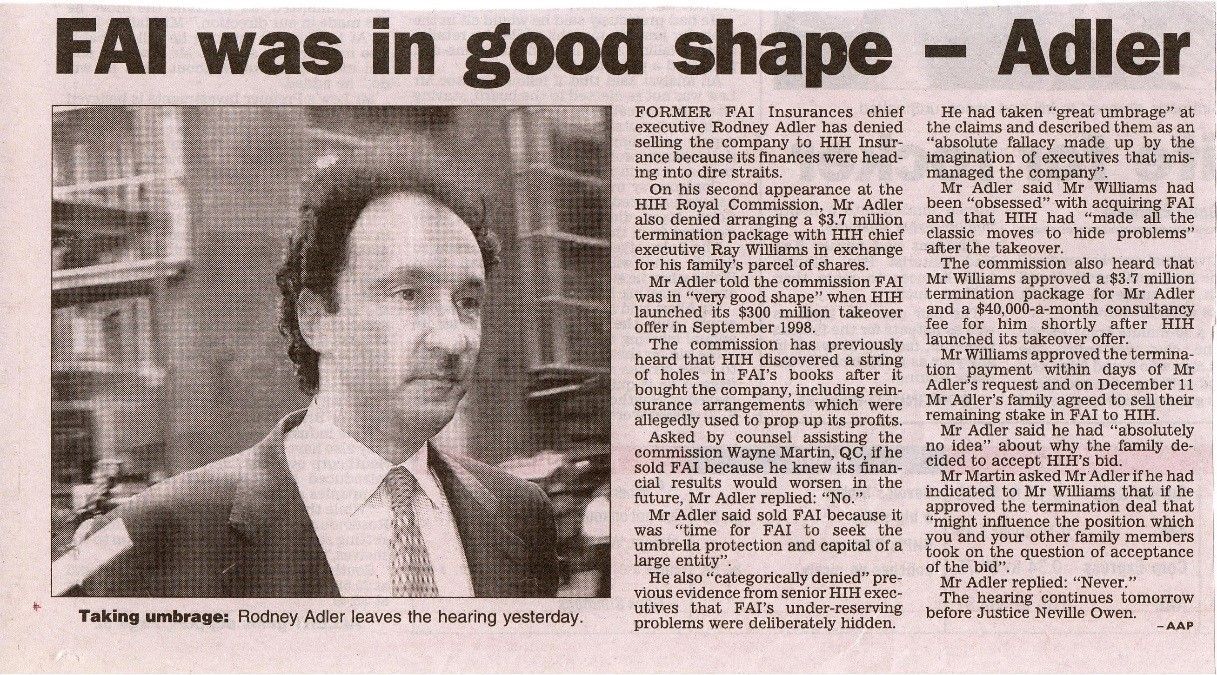‘Capitalisation Rates’ And ‘discount Rates’ Used In Valuations & Claims For Loss Of Profit As Part Of Damages Or Compensation
What lawyers need to know!
Capitalisation rates & discount rates are specific valuation terms that factor in ‘risk’ which attaches to the cashflows or profits relating to the subject business or asset to be valued or to be included in a claim for loss of profits forming part of a claim for damages or compensation.
Lawyers are accustomed to reviewing expert reports prepared by expert valuation and loss quantification professionals often containing what appears to be ‘boiler plate’ drafting on esoteric concepts, which can be confusing to the reader. Rather than hope that the court will prefer your expert’s opinions, over your adversary’s expert opinion, on the relevant capitalisation rate or discount rate that should be applied, we have provided a comprehensive presentation to arm you with the relevant need-to-know information in a presentation that covers this rather technical topic that often results in significant differences in quantum between opposing experts.
Capitalisation rates & discount rates both factor in ‘risk’ attached to the cashflows
‘Risk’ is factored into a ‘valuation’ or claim for ‘loss of profits’ as part of damages or compensation using one or two broad approaches:
‘Top-down’ approach, i.e. using a ‘comparable asset’ or ‘venture capitalists’ method
This method can include observing transactions in the market & adjusting for the following types of risk factors: a) small company risk, e.g. for lack of diversified revenue, lack of geographical spread, etc; and b) other specific risks, e.g. key person risk, dependence on key customers, dependence on key suppliers, etc.
This method should also factor in what stage the product and/or business is within its ‘life cycle’ together with ‘strengths, weaknesses, opportunities and threats analysis’ (also commonly referred to as SWOT analysis). We also consider Michael Porter’s (Harvard Business Review) Five Forces Analysis to be useful.
‘Bottom-up’ approach, i.e. deriving a ‘weighted cost of capital’ or WACC
This requires an assessment of cost of equity (returns expected by owners) and cost of debt (returns expected by financiers, not owners).
Cost of equity comprises the following three components:
Beta. This represents the ‘un-diversifiable risk’ of ownership in the company, assuming the investor has a fully diversified and efficient investment portfolio. The beta should represent the asset beta (or unleveraged beta), as opposed to the equity beta (or leveraged beta). A comparable company or industry beta might be adopted as the proxy for a particular company’s beta.
Market risk premium. For Australian equity, a market risk premium (or MRP) is likely to be somewhere in the range of 5% to 8% depending on the particular study relied on and the views of the valuation expert.
Risk-free rate. Typically, this is a government treasury bond of equivalent investment period. There is no uniform consensus as to whether a spot rate, adjusted (normalised) spot rate, historical average rate could apply as the proxy for the risk-free rate.
Cost of debt comprises the following two components:
Average debt yield for all debt on all assets of the company. This could be complicated where debt finance used by the company is unsecured and not on commercial terms and the company may not be operating at an optimal gearing level.
Tax shield on debt. This is usually the Australian corporate tax rate.
Once inputs are gathered, they are applied in a mathematical formula to generate a WACC. Additional adjustments could apply to calculated WACC e.g. for country-specific risk (if applicable), small company risk e.g. for lack of diversified revenue, lack of geographical spread and other specific risks, e.g. dependence on key customers, dependence on key suppliers, etc.
The terms ‘capitalisation rate’ and ‘discount rate’ are specific to the following two alternative valuation methods
A method using single-period analysis to conclude on value e.g. a capitalisation of future maintainable earnings method. This method can be a relatively unsophisticated valuation method, requiring fewer assumptions to support the calculated value. A capitalisation rate applies to a perpetuity to determine present value at a point in time.
A method using multi-period analysis to conclude on value e.g. a discounted cash flow method. This can be a relatively sophisticated valuation method, requiring multiple assumptions to support the calculated value. A discount rate converts future cash flows over multiple periods into a present value at a point in time.
Single-period analysis (requiring a capitalisation rate) is appropriate where the following factors are present:
Mature asset
If the business or asset is newly established and does not have demonstrated track record of generating a consistent level of earnings, it will be more difficult to reliably estimate a level of future maintainable earnings.
Profitable
If the business or asset has a history of incurring losses, it will be more difficult to reliably estimate a level of future maintainable earnings. Furthermore, if the quantum of historical and expected profits is considered insufficient relative to the capital assets owned by the business, a capitalisation of future maintainable earnings is unlikely to yield the correct conclusion of value.
Stable industry
If the asset or business operates in a volatile industry, it will be more difficult to reliably estimate a level of future maintainable earnings.
Depreciation equals ‘capex’ or no capex required
Capex refers to capital expenditure (which sits on a balance sheet, separate to operating expenditure which is shown in the profit & loss statements). The use of EBIT (earnings before interest and tax) assumes that depreciation equals the capex. Use of EBITDA (earnings before interest tax depreciation and amortisation) assumes that the business has no capex requirements. If the business expects fluctuating capital expenditure requirements in order to continue operating, then this will not be captured in the future maintainable earnings.
Stable working capital
If the business has fluctuating working capital requirements in order to continue operating, it may be necessary for working capital shortfalls to be funded via debt finance and those finance costs may not be captured in the future maintainable earnings. A business reporting profits can be technically insolvent, i.e. unable to pays its debts as and when they fall due particularly if suppliers require payment before sufficient debtors are collected.
Consideration of ‘discounts’ or ‘premiums’ may be warranted for valuation of a whole or part ownership interest in the entity conducting the business. Examples include:
Where observations of profit multiples for a minority interest in publicly listed companies are made it may be necessary to apply a premium for control.
Where observations of profit multiples for control of a publicly listed company it may be necessary to remove a premium for investor or strategic value.
Where observations of profit multiples for a minority interest in publicly listed companies are made it may be necessary to apply a discount for lack of marketability (or illiquidity).
Capitalisation rates and discount rates can be challenging topics for barristers and solicitors to get their heads around, however, we pride ourselves on explaining difficult concepts in a simple way. Contact our forensic accounting and valuation experts if this issue is relevant to one of your current matters.
Leave a Comment:
SEARCH ARTICLE:
SHARE POST:
RECENT ARTICLE:











